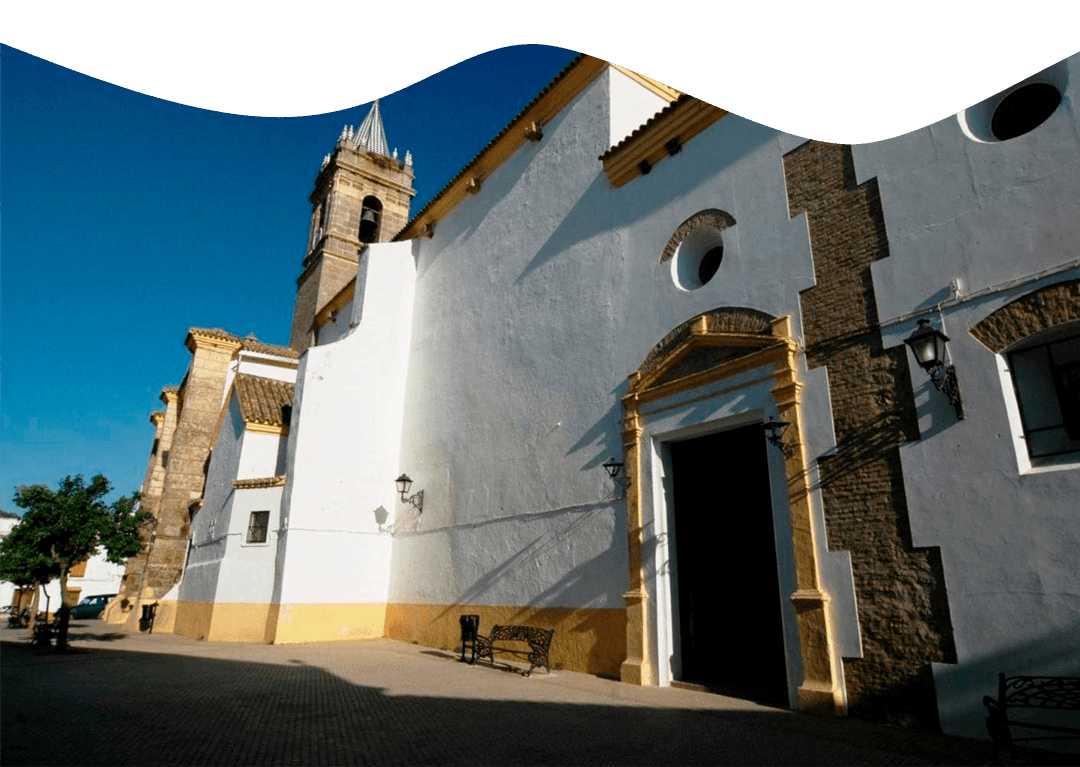


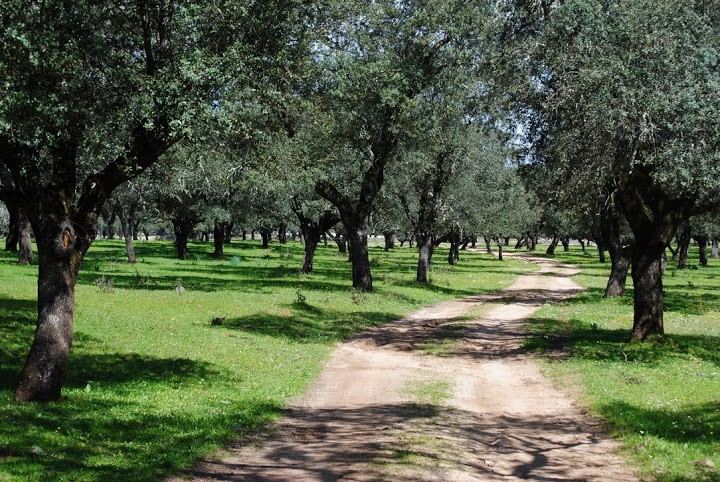
The usual question before taking a trip: should you choose rest and tranquility, or an exciting place to visit? In El Pedroso, you have everything! The adventure of discovering the history, nature and culture of the region, celebrations like nowhere else; discover new flavors with our gastronomy and revitalize yourself in the purest nature in our rural accommodations.
Because we know that it has everything you want for your trip, we want to invite you to get to know El Pedroso in all its splendor. We give you a review of everything you can't miss during your visit.

El Pedroso is located in the NE of the province of Seville, 60 km from the capital, and can be considered the gateway to the Sierra Morena region of Seville. It has an area of 314 km², which represents 14.45 % of the total territory of the region; It is located at an average height of 415 m. above sea level, at a latitude of 37º 50′ and a longitude of 5º 45′.
Its location on the southern branches of Sierra Morena It gives its landscape a special physiognomy, with low hilly mountains, the highest being Cerro de La Lima at 678 meters. These mountains are rich in minerals, especially iron; in some areas granite outcrops also appear, which give our territory a peculiar appearance.
His vegetation It is made up of a Mediterranean forest of holm oaks, cork oaks and olive trees, mainly dehesa, the bushes occupy the highest areas. The river basin It has the streams called Parroso and San Pedro; the banks of the Guanagil and the Hueznar; the Viar river and the Hueznar reservoir. Given its high ecological value, most of its territory has been included as part of the Sierra Norte Natural Park of Seville, within in turn the Network of Protected Natural Spaces of Andalusia.
El Pedroso, like the rest of the Sierra Morena of Seville, registers the maximum pluviometry of the province of Seville, its irregularity, together with the existence of a long dry period, being its defining feature. The seasonal distribution of temperatures is typical of the regional area in which it is located, the best defined seasons being summer, with July and August as the warmest months (temperatures that range between 24 and 25º C on average) with a maximum average of 35º C and a minimum average of 12.3º C and winter that reaches the lowest temperatures in December, January and February, ranging between 8 and 9º C on average, with a maximum average of 13.6º C and an average minimum of 3º C
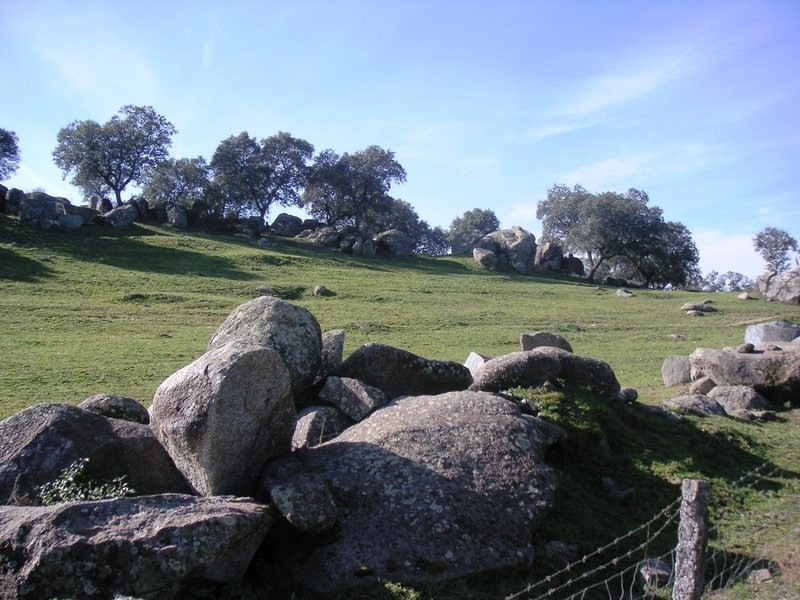
We can place the human presence in the area of El Pedroso in the Paleolithic, due to the discovery of flint arrowheads.
The Neolithic megalithic culture also developed here, which confirms the recent discovery of a Tholos.
The recovery of ceramics that in archeology are called “crestants” will guarantee the existence of human populations also in the Chalcolithic.
The arrowheads and crescents discovered in the Pago de las Porrillas granitic area, close to the current urban center, and the tholos (1) in the continuation of the aforementioned granitic area.

The term of El Pedroso (and the entire Sierra Morena), was part of the Turdetania (Kingdom of Tartesso) inhabited by the Tartessas and Túrdulas tribes.
In the pasture of the Casas de Gómez, a gold trousseau (of Tartessian origin) was found that was deposited in the Archaeological Museum of Seville.
In the fields of El Pedroso, in isolation and on the surface, only remains of tegulas and bricks are found, apparently of Roman construction, as well as abundant remains of houses, distributed throughout the area, it being inaccurate and erroneous to identify El Pedroso (Seville) with the Augustobriga that Greek and Latin writers placed in Vettonia (Lusitania) coinciding with Talavera la Vieja (Cáceres) close to the town of Villar del Pedroso, hence Rodrigo Caro's error.
The importance of this area for the Romans already comes from their ancestors and is evident by the importance that the extraction of different metals had throughout the region.
Los pocos restos hallados en El Pedroso no darían pie a muchas referencias a no ser porque en el límite de su término actual, hoy en el de Villanueva del Río y Minas, nos encontramos un yacimiento arqueológico tan desconocido para muchos, como sorprendente. Entre un bosque de encinas y alcornoques, como preservándose de curiosos, está el llamado “Castillo de Mulva” denominación que con seguridad deriva de la sólida construcción que, emergiendo entre los árboles, divisaron sus descubridores en 1756 y de la inscripción que en una placa del foro nos dice:“…populoque muniguensi hispaniae…”

Its buildings and especially the imposing sanctuary that presides over the hill attest to its importance. Its activity was the smelting of copper in the first stage and later of iron.
It had two periods of occupation, pre-Roman and Roman, which span from the 17th century. VI a. from C. until the beginning of the s. IV d. of C.
The final stretch of the Empire, begun by Augustus in the year 27 BC. C., it is also for Munigua, which began its decline at the end of the s. IV (AD). Remains, such as iron foundry slag, still existing in the area, and many of its buildings, made of granite, give us clear evidence that the raw materials came from the nearby environment such as, for stone, the exploitation of the same. batholith, and for iron ore, the El Pedroso mines, such as La Lima or Navalázaro.

The Kura of Firrish, an Arab district to which El Pedroso belonged, whose capital Firrish, is located in the municipality of Constantina, Cerro de la Armada.
The toponymy inherited from the Muslims is scarce: Calle del Alcazarejo; Half Bushel; Moorish Cliff; Algamasilla; Stone of the Enchanted Mora; Guzna River (Rivera del Huéznar); Parroso stream and olive grove “at the Altabacar site”.
Several years ago, in the pastures of Montegil and Manchallana, two treasures of Arab coins were found, currently deposited in the Archaeological Museum of Seville
Don't leave without visiting all its natural, religious and historical attractions. Add to your experience the Hermitage of Cristo de la Misericordia, the Cruz del Humilladero, the Church of Nuestra Señora de la Consolación, the Hermitage of the Virgen del Espino, our Iron Factory, or our hiking routes and much more!
Altarpiece of the High Altar. Work contracted and carried out by Luis de Baias starting in 1727. The contract specifies that the imagery work would be entrusted to Mr. Pedro Duque Cornejo. In the central niche there is a sculpture of the Virgin and Child, from the end of the 16th century and attributed to Jerónimo Hernández.
Cristo del Buen Fin: Polychrome wooden sculpture that represents the dead Christ, fixed to the cross with three nails. Work attributed to the sculptor Pedro Millán, dated around 1505; His style is within Flemish Gothic.
Altarpiece of the Immaculate Conception: This work was contracted by Juan Martínez Montañés in the year 1606, and was completed in the year 1609. It appears as a fairly simple altarpiece, whose structure is distributed in two bodies of three streets each, and a bench. Originally it was presided over by the image of the Immaculate Conception, although today its place is occupied by the image of Saint Joseph, whose characteristics are in line with the style of the 18th century. On the sides of this image appear the reliefs of Saint Bartholomew and Saint James. In the center of the second body, the canvas of Saint Catherine, recently discovered in the restoration of the altarpiece. It is a magnificent work by the Flemish painter Hernando de Sturm. On the sides are two panels that represent San Pedro and San Diego de Alcalá, works attributed to Francisco Pacheco.
Immaculate Conception (by Martínez Montañés). Carving made and intended to occupy the central niche of the previously described altarpiece, it is currently located in the neoclassical altarpiece of the Sacramental Chapel. The sculpture of the Immaculate Conception is a beautiful image that represents the Virgin, almost a girl. He is standing on the moon with an angel's head in the center. The Virgin's face is inclined to the right side and directs her gaze to the ground. The clothing and mantle that covers it, forming large folds, is interesting.
Altarpiece of Santa Ana. In the year 1716, the Third Order of the convent of San Francisco de Cazalla de la Sierra, hired Luís de Baias to carve the altarpiece.
Once the convent was disentailed, it passed into the hands of private individuals, and abandoned, its altarpieces and 10 images were in serious danger of being destroyed. The Archbishopric of Seville authorized that the aforementioned altarpiece be transferred to the parish of El Pedroso along with other smaller ones. Restored in Seville, it is currently presided over by an image of Saint Anne. Note: Its identification was possible thanks to the symbology of the Order of Saint Francis, and an inventory of the parish from 1890.
Sacramental Chapel Altarpiece. At the head of the Chapel there is an altarpiece dating from the beginning of the 18th century, in a neoclassical style. Golden altarpiece whose structure is formed by three superimposed bodies and as an architectural element it presents fluted columns of the Corinthian order. The main body contains a sculpture of the Immaculate Conception by Martínez Montañés. It culminates with an attic where a sculpture of Saint Teresa sits, dated to the 18th century.

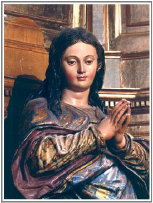

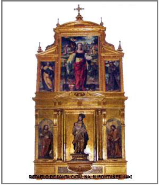
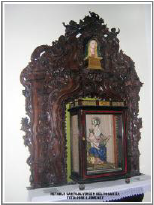
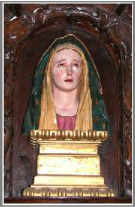
Altarpiece that consists of a main body and an attic, is from the 18th century and presents great originality of carving and daring in its forms, with an exposed wood finish. The identity of the author is unknown, but the gouge cut of the carving shows the hand of a great master.
In the main body there is a neoclassical display case made of rosewood wood that has inside a carving of the Virgin of the Rosary with the child, dating back to the 17th century and made of polychrome wood, it seems to come from the Cartuja de Sta. María de las Cuevas de Sevilla.
In the attic there is a bust of La Dolorosa belonging to the 17th century Granada school.
It is located in the chapel next to the head of the temple on the Gospel wall; The altarpiece belongs to the first third of the 17th century, as indicated by an inscription that appears on its bench, which indicates that the altarpiece was established in the year 1630 specifically.
The structure of the altarpiece is made up of a bench, a body with three streets and an attic, the three streets of the main body of the altarpiece are framed by fluted columns of the Corinthian order.
The central street is occupied by a semicircular niche, which contains the candlestick image of the chapel's owner, the Virgin of the Rosary, dated to the 18th century. This street is topped by a split pediment, semicircular and subdivided into three
parts by two scrolls.
The other two streets of the main body of the altarpiece are straight and contain reliefs, in the left street there is a relief of Saint John the Baptist and the right street is occupied by the relief of Saint Paul.



Near Holy Week in 2001, when the altarpiece by Juan Martínez Montañés was dismantled to be restored in Seville, its authors were pleasantly surprised when they observed that, behind the painting of the Virgin of Guadalupe, there was another, which turned out to be Saint Catherine of Alexandria.
Once the painting of the Saint was restored, it has been classified as one of the best works of Hernando de Sturmio, a highly prestigious Flemish painter in Seville in the first and second quarters of the 16th century.
The numerous consultations carried out in the historical collection of the Parish Archive of El Pedroso had alerted us to the possible existence (in said parish) of an image of Saint Catherine, given that, in the baptism books of the 16th century, a significant number In records of baptisms of girls, they appear Christianized with the name of Catalina, and it is common for mothers and godmothers to also be called Catalina. In the 16th century, was Saint Catalina the Patroness of the place of El Pedroso? Were the people of Pedro very devoted to the Saint? .
We persisted with our queries in the referenced file and discovered that in the file called: Book of Possessions of the Parish Church. Inventories = 1547-1611, in folio no. 34 contains the following: “The jewels and ornaments that the factory has are these – Inventory – twelve days of February, one thousand five hundred and seventy-two years – Located to the left of the main altar, it is a work made in the 16th century, from white marble, with heads of angels on each of its fronts.
1º Although it has not yet been studied, this candlestick image is a beautiful example of Andalusian imagery from the 18th century.
2nd Canvas from the 19th century, representing the Virgin of the Napkin, a copy of the work that Murillo made with the same name.
18 Images and altarpieces: ytem another altarpiece of the image of sanctacatherina questa On its particular altar it is made of good pinzel.
CIF: P4107300H
Telephone: 954 88 90 01
Fax: 954 88 93 13
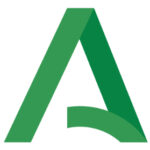
El Pedroso 2022. All rights reserved © Nattule. Web development NattuAR.
We firmly believe that the internet should be available and accessible to anyone, and are committed to providing a website that is accessible to the widest possible audience, regardless of circumstance and ability.
To fulfill this, we aim to adhere as strictly as possible to the World Wide Web Consortium's (W3C) Web Content Accessibility Guidelines 2.1 (WCAG 2.1) at the AA level. These guidelines explain how to make web content accessible to people with a wide array of disabilities. Complying with those guidelines helps us ensure that the website is accessible to all people: blind people, people with motor impairments, visual impairment, cognitive disabilities, and more.
This website uses various technologies that are meant to make it as accessible as possible at all times. We use an accessibility interface that allows persons with specific disabilities to adjust the website's UI (user interface) and design it to their personal needs.
Additionally, the website uses an AI-based application that runs in the background and optimizes its accessibility level constantly. This application remediates the website's HTML, adapts Its functionality and behavior for screen-readers used by the blind users, and for keyboard functions used by individuals with motor impairments.
If you've found a malfunction or have ideas for improvement, we'll be happy to hear from you. You can reach out to the website's operators by using the following email
Our website implements the ARIA attributes (Accessible Rich Internet Applications) technique, alongside various different behavioral changes, to ensure blind users visiting with screen-readers are able to read, understand, and enjoy the website's functions. As soon as a user with a screen-reader enters your site, they immediately receive a prompt to enter the Screen-Reader Profile so they can browse and operate your site effectively. Here's how our website covers some of the most important screen-reader requirements, alongside console screenshots of code examples:
Screen-reader optimization: We run a background process that learns the website's components from top to bottom, to ensure ongoing compliance even when updating the website. In this process, we provide screen-readers with meaningful data using the ARIA set of attributes. For example, we provide accurate form labels; descriptions for actionable icons (social media icons, search icons, cart icons, etc.); validation guidance for form inputs; element roles such as buttons, menus, modal dialogues (popups), and others. Additionally, the background process scans all of the website's images and provides an accurate and meaningful image-object-recognition-based description as an ALT (alternate text) tag for images that are not described. It will also extract texts that are embedded within the image, using an OCR (optical character recognition) technology. To turn on screen-reader adjustments at any time, users need only to press the Alt+1 keyboard combination. Screen-reader users also get automatic announcements to turn the Screen-reader mode on as soon as they enter the website.
These adjustments are compatible with all popular screen readers, including JAWS and NVDA.
Keyboard navigation optimization: The background process also adjusts the website's HTML, and adds various behaviors using JavaScript code to make the website operable by the keyboard. This includes the ability to navigate the website using the Tab and Shift+Tab keys, operate dropdowns with the arrow keys, close them with Esc, trigger buttons and links using the Enter key, navigate between radio and checkbox elements using the arrow keys, and fill them in with the Spacebar or Enter key. Additionally, keyboard users will find quick-navigation and content-skip menus, available at any time by clicking Alt+1, or as the first elements of the site while navigating with the keyboard. The background process also handles triggered popups by moving the keyboard focus towards them as soon as they appear, and not allowing the focus to drift outside of it.
Users can also use shortcuts such as “M” (menus), “H” (headings), “F” (forms), “B” (buttons), and “G” (graphics) to jump to specific elements.
We aim to support the widest array of browsers and assistive technologies as possible, so our users can choose the best fitting tools for them, with as few limitations as possible. Therefore, we have worked very hard to be able to support all major systems that comprise over 95% of the user market share including Google Chrome, Mozilla Firefox, Apple Safari, Opera and Microsoft Edge, JAWS and NVDA (screen readers), both for Windows and for MAC users.
Despite our very best efforts to allow anyone to adjust the website to their needs, there may still be pages or sections that are not fully accessible, are in the process of becoming accessible, or are lacking an adequate technological solution to make them accessible. Still, we are continually improving our accessibility, adding, updating and improving its options and features, and developing and adopting new technologies. All this is meant to reach the optimal level of accessibility, following technological advancements. For any assistance, please reach out to